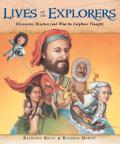Around London with Kids by Fodor’s
This informational text presents the best of London in a fun and intriguing way for children. The book has separate sections labeled Fun Times A to Z, Best Bets, Something for Everyone, and All Around Town. Each section has a collection of related chapters to interest, teach, and inspire the reader to visit London. This book is complied based on mom, dad, and children suggestions. The suggestions are very helpful and unexpected to tourists. Each page offers the address, website, fees, hours of operations, and age appropriateness. For example, the passage about the Changing of the Guard gives a summary as well as a Make the Most of Your Times suggestion if you arrive and the area is already over crowded. The book explains the best view, when crowds are near the front, is the Wellington Barracks on Birdcage Walk (the guard is inspected at 11am before going to the Palace for the change ceremony). Around London with Kids helps parents and children plan their journey through London with a spark of excitement and fun. It makes the voyage seem manageable and affordable for families with all the inside tips and ideas.





